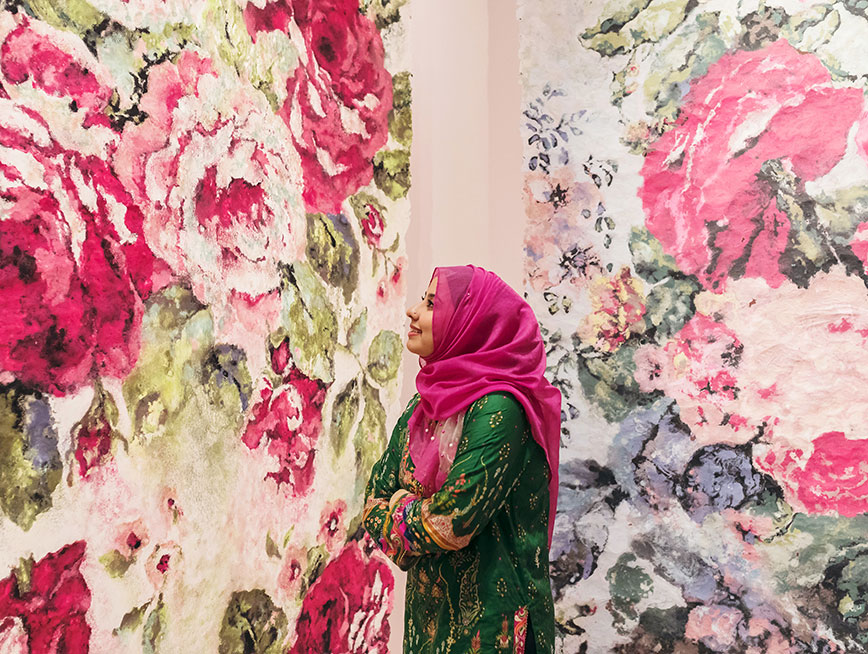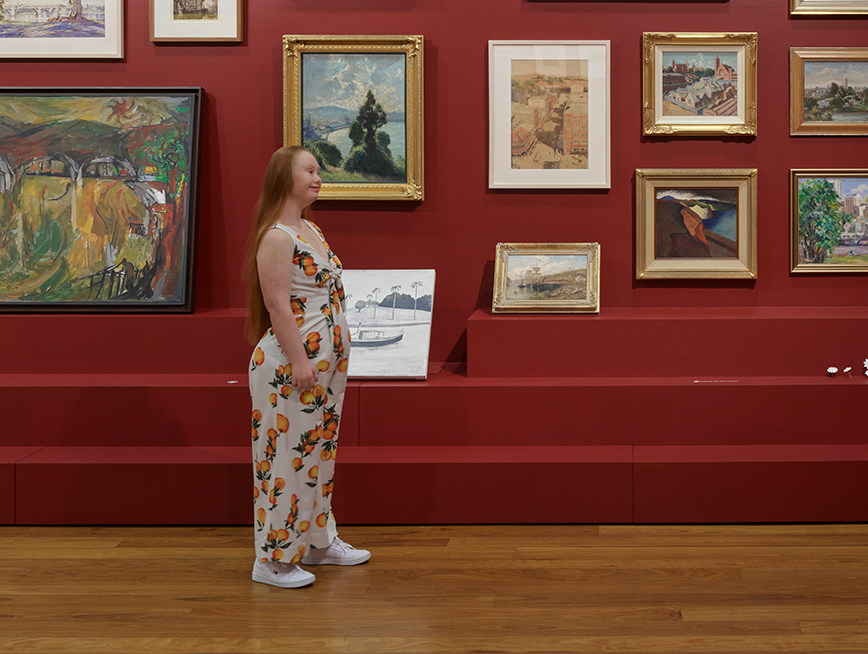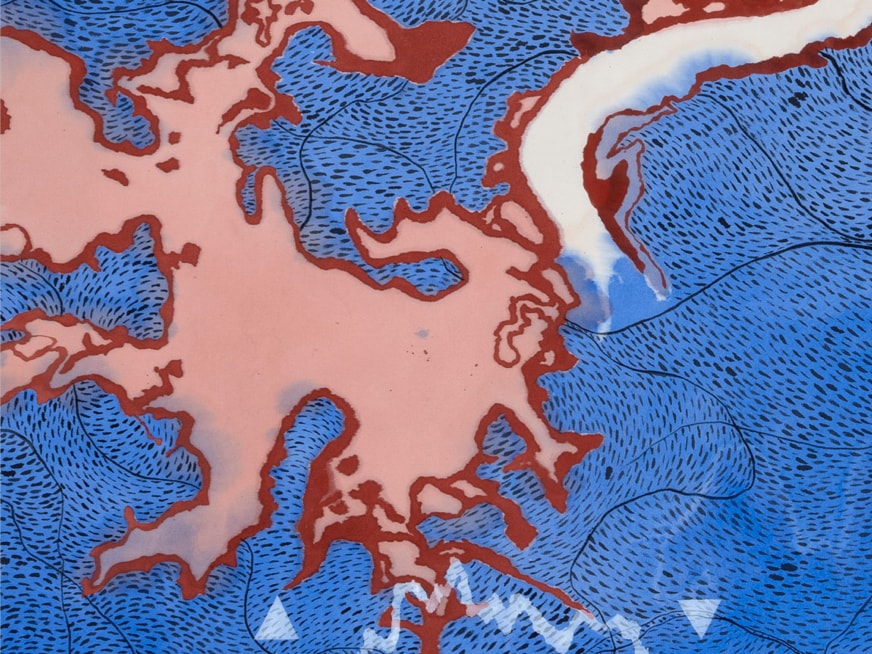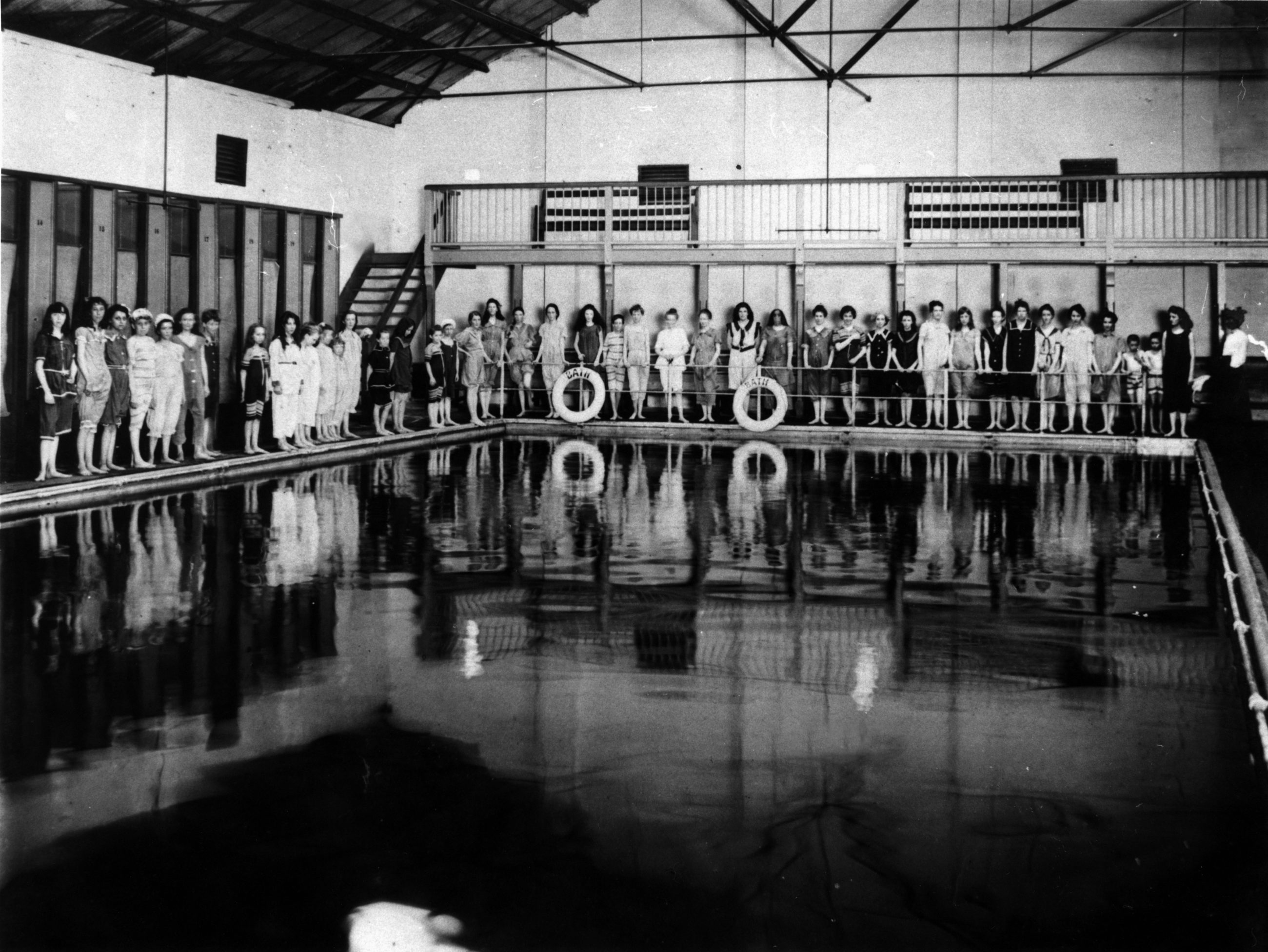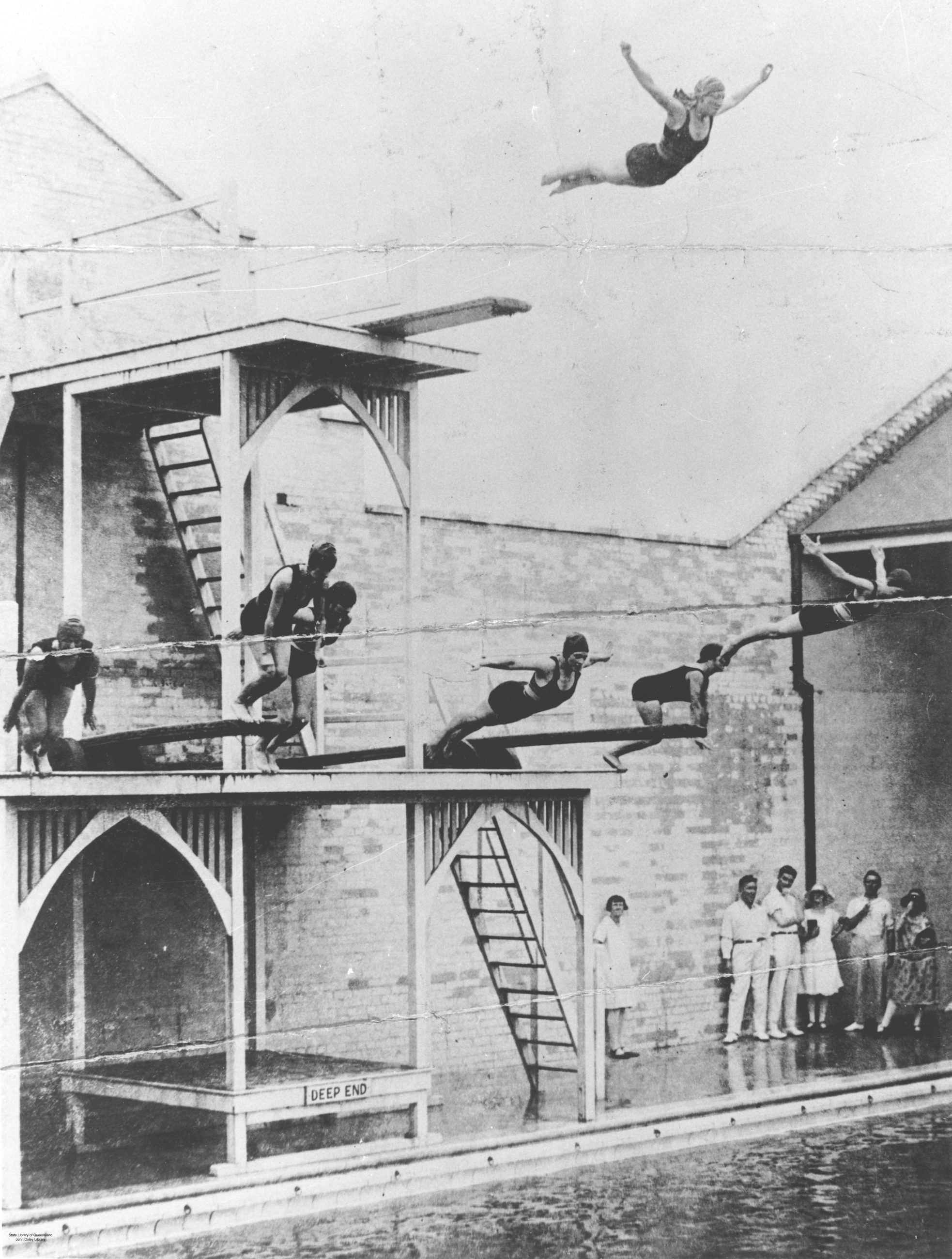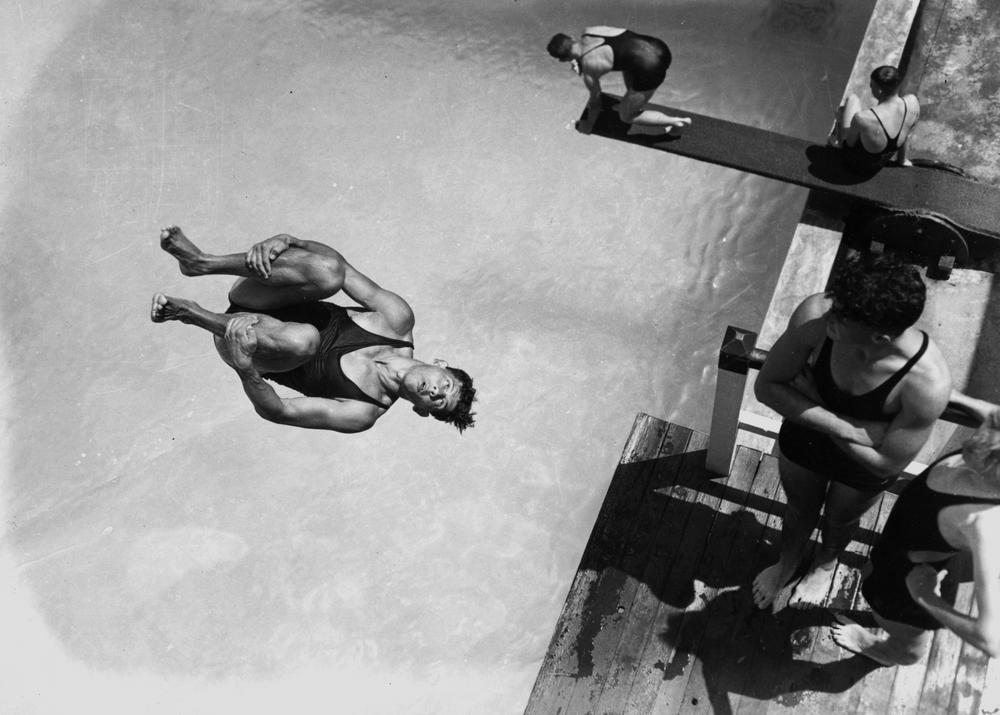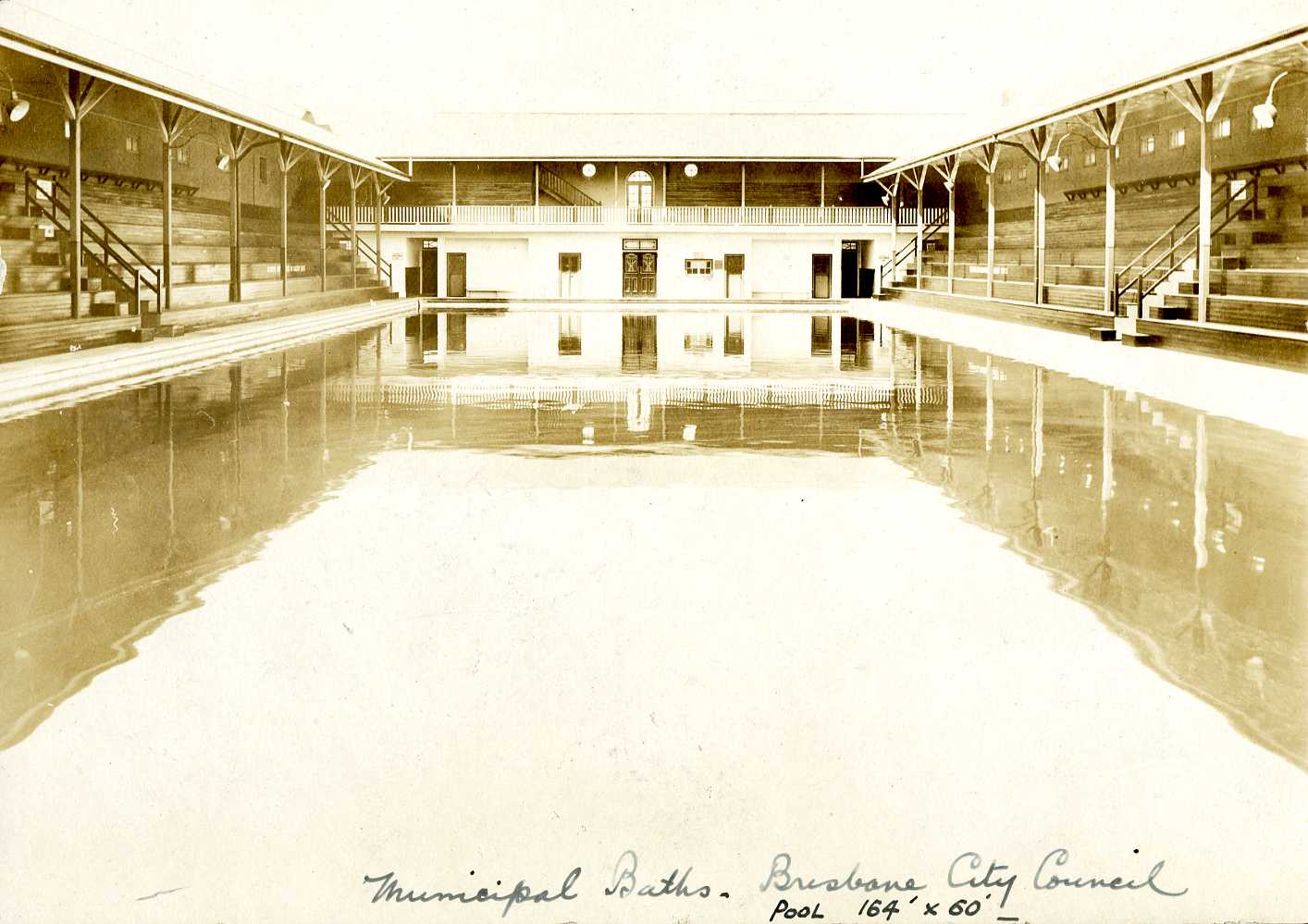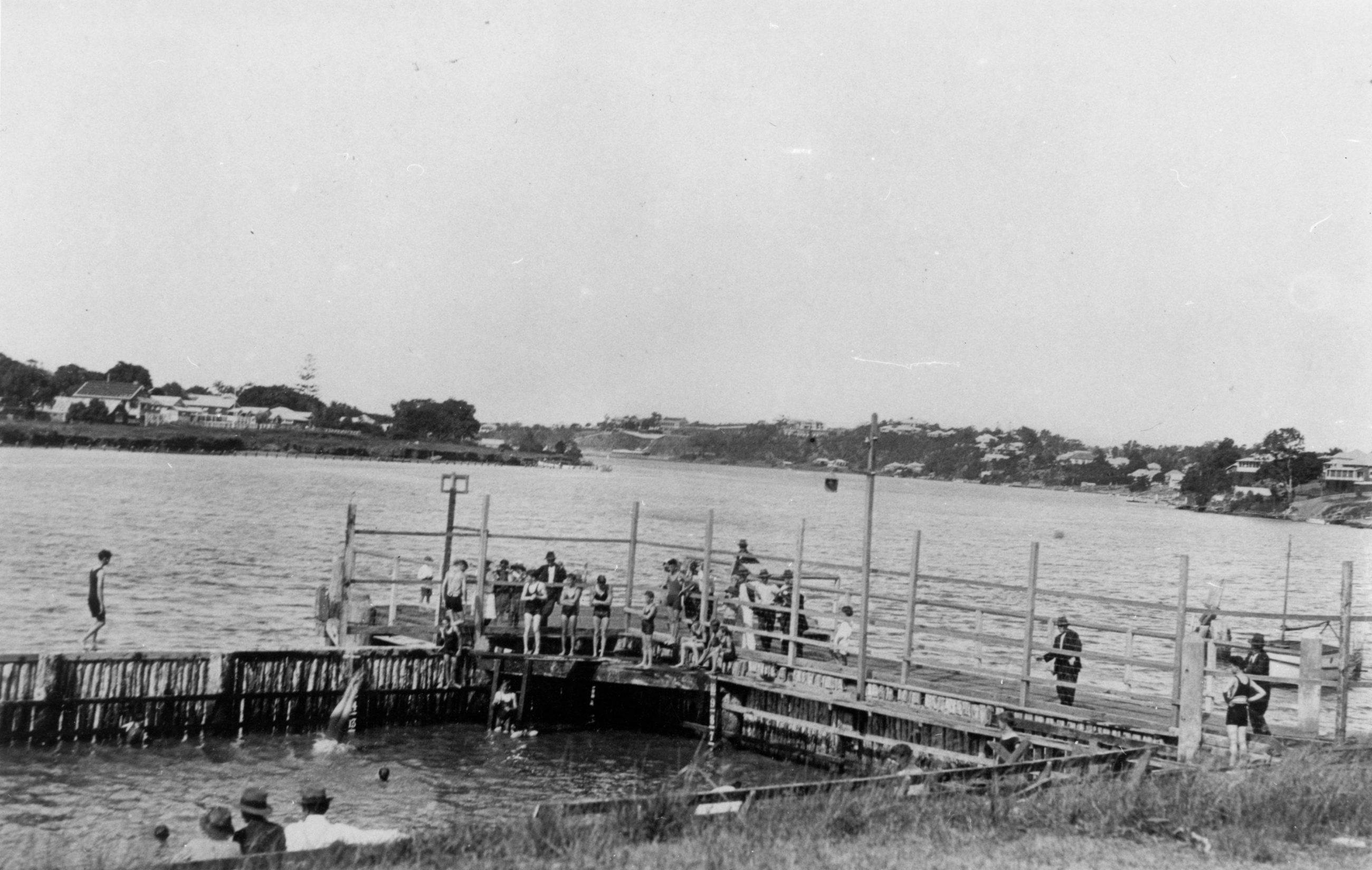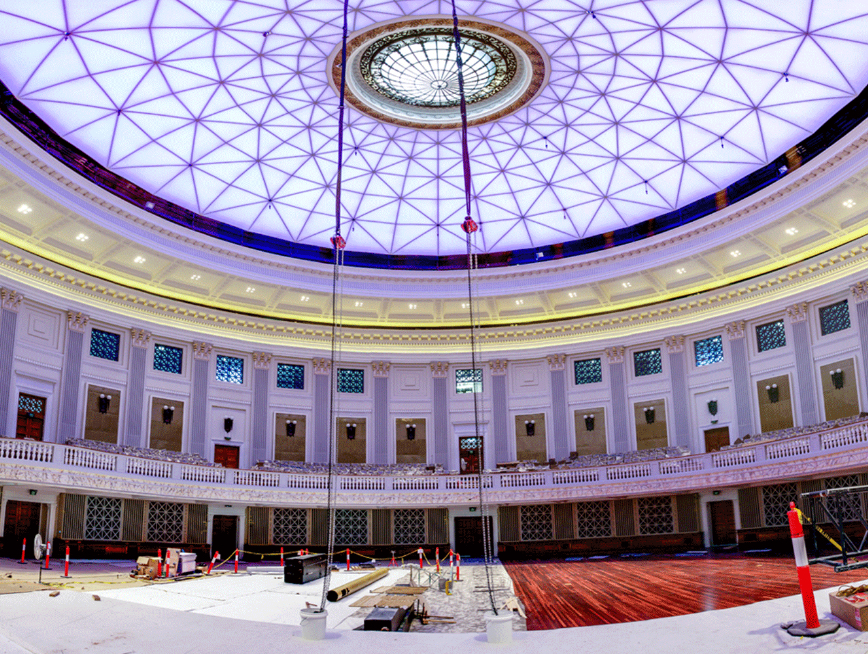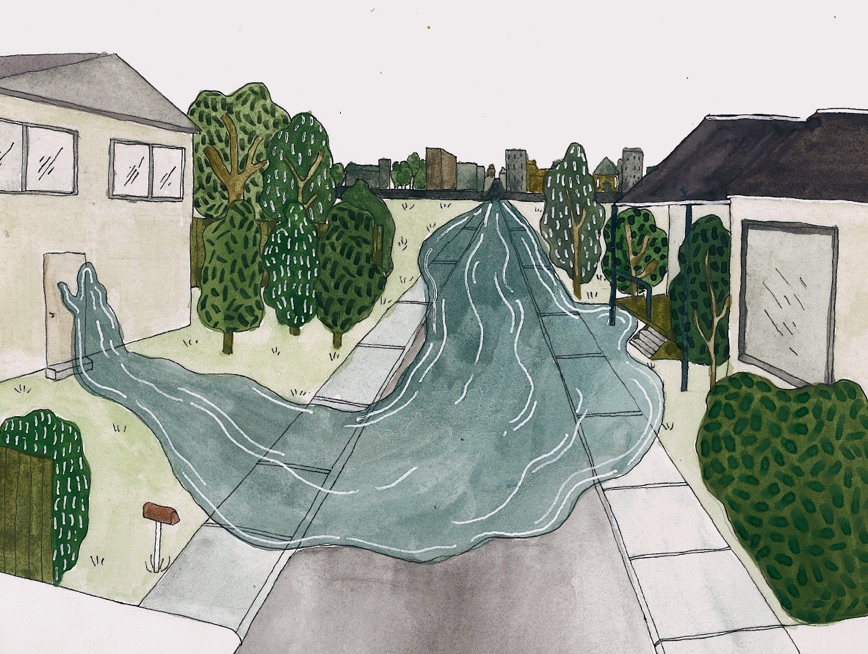Nestled away in a leafy, cottage-lined street of Spring Hill, sits the oldest surviving swimming bath in the southern hemisphere. Designed by Thomas Kirk and built between 1886 and 1913, the cosy and convivial appeal of the baths is enhanced by the brightly coloured Victorian dressing booths that circle the 23.43 metre pool.
Adding to its historical appeal, the heritage listed baths feature stepped wooden bleachers, an upper gallery and a two-storey caretaker’s residence which sits at the eastern end of the building.
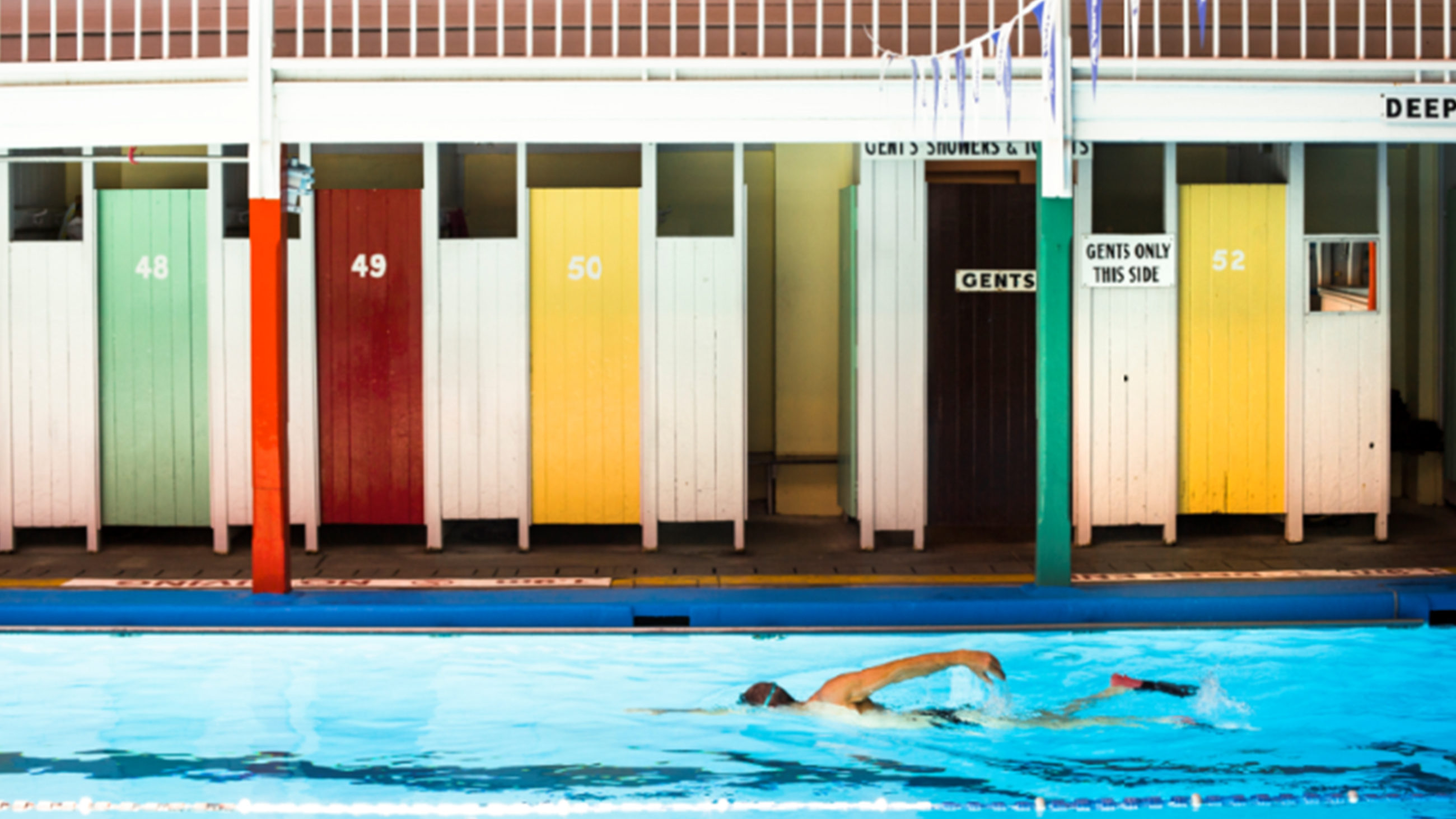

The open roof is designed so that spectators can keep dry and shaded, but also allows sunlight to spill in, illuminating the swimming pool on sunny days entire project cost £2,526, approximately $330,483.07 in today’s currency.
The Spring Hill Municipal baths were commissioned to replace the city’s increasingly polluted floating river baths that lined the Brisbane River from the mid 19th century. With a key focus on sanitation, the new Spring Hill baths were emptied nightly and fresh water was piped in from large holding tanks that sat at the end of the baths. This outdated practice was finally replaced by a modern, and less wasteful filtration system in 1961.
Originally only accessible to men, the baths began admitting women 12 months after opening – but with strict swimming times enforced. It was not until 1928 that ‘mixed’ swimming was introduced. Modern day swimmers can still admire the vintage signage dotted around the pool’s edge with amusing directives like “Men must not loiter on this end of the pool”.

